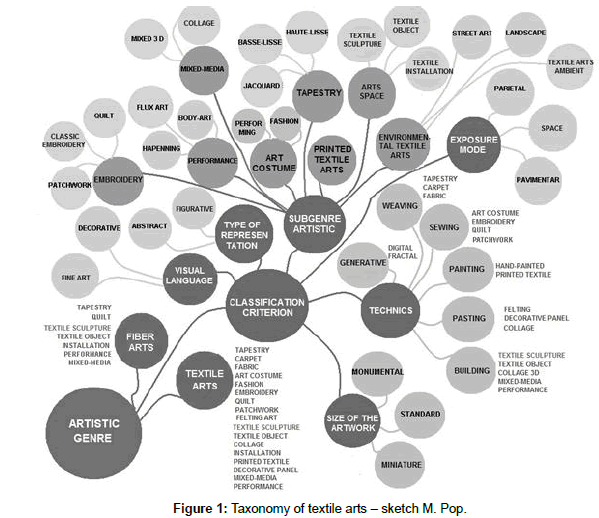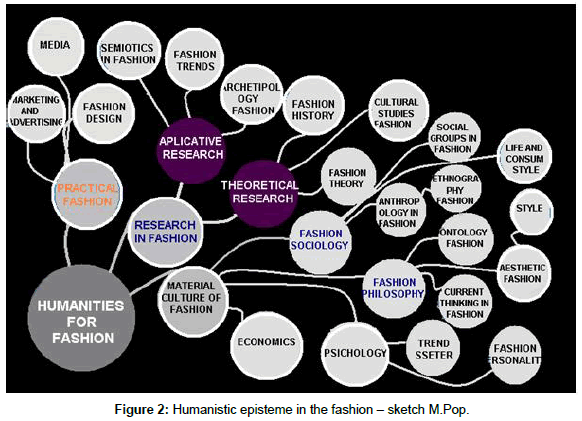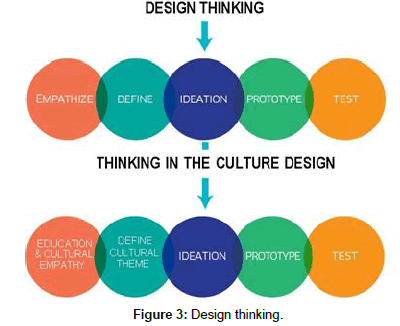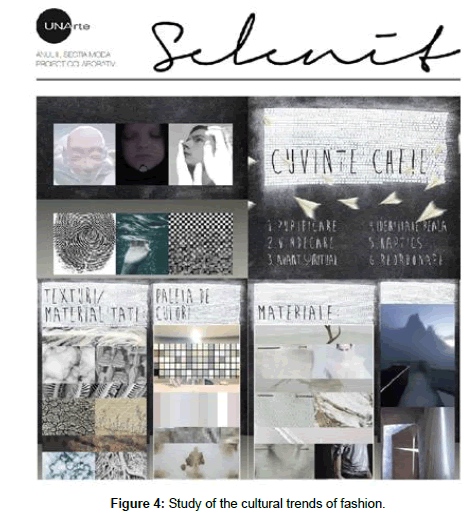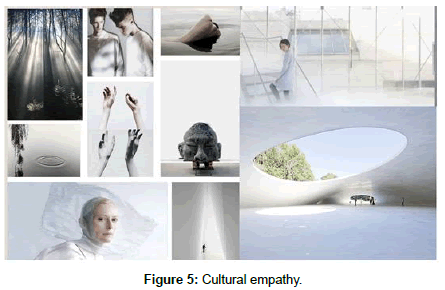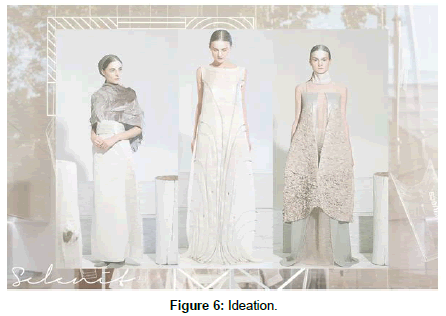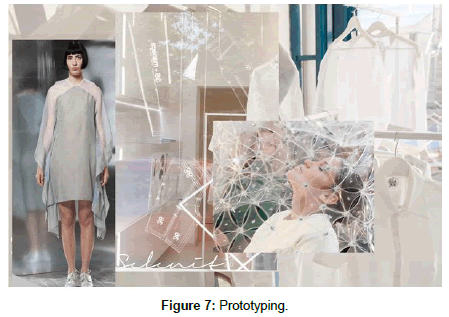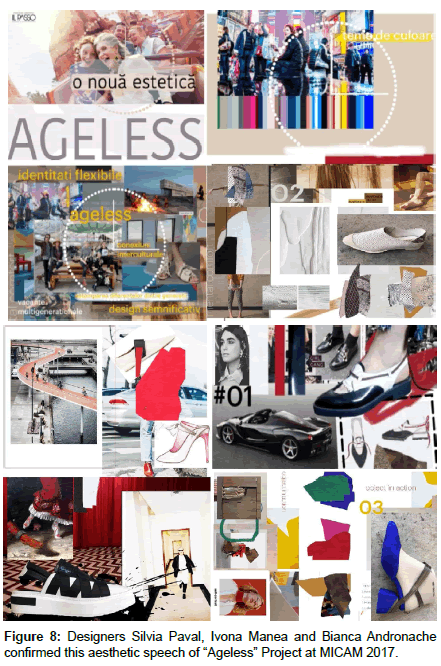Research Article, J Fashion Technol Textile Eng S Vol: 0 Issue: 3
Humanistic Episteme in Researching Cultural Sustainability of the Fashion Product
Marlena Pop1* and Ioana Sanda Avram2
1National Research and Development Institute for Textile and Leather, Bucharest, Romania
2National University of Arts, Bucharest, Romania
*Corresponding Author : Marlena Pop
National Research and Development Institute for Textile and Leather, Bucharest, Romania
E-mail: pop_marlen@yahoo.ca
Received: October 04, 2017 Accepted: November 02, 2017 Published: November 06, 2017
Citation: Pop M, Avram IS (2017) Humanistic Episteme in Researching Cultural Sustainability of the Fashion Product. J Fashion Technol Textile Eng S3:008. doi:10.4172/2329-9568.S3-008
Abstract
Sustainability as a current general requirement consists in applying the principle by which all societal systems must be less dependent on resource use and products must last longer, thus imposing a slowdown in serialization, production, consumption, an increase in value addition and product customization. This step is required sine qua non, because the creative industries are based on the concept of surplus value of the product which may be a material constitutive, based on superior technology and cultural identity. The complexity and usefulness of cultural forecasts in developing fashion trends will be demonstrated in the paper. This theory emphasizes cultural sustainability of the fashion product, proving to be a landmark in efficiently structuring cultural trend research to develop the product concept in a style or design office.
Keywords: Episteme; Sustainability; Research; Culture; Fashion
Introduction
In recent years, cultural sustainability has become a real social contract between Europe and its population. This societal and economic development direction is associated with “corporate social responsibility [1] with the importance of the cultural criterion in the decision to buy a fashion product and with an orientation towards green economy, in progress of development and implementation, in some companies. "Sustainability is much more than our relationship with the environment, it is about our relationship with ourselves, with our communities and our institutions [2]. The essential principles of a sustainable socio-economic policy for companies are: "Respect for people (at all organisational levels), community, and its supply chain; Respect for the planet, acknowledging that resources are finite; and Generation of profit only after adhering to these principles [3]. As a basic concept of psychology, culture is “subjective perception of the man-made part of the environment [4], including social stimuli, associations, attitudes, stereotypes, norms, values. For any artist, creative or designer, “imagination is an area of the mind which creates worlds and which is permanently fuelled by the archetypes of the collective unconscious mind, as well as by its own archetypal structure of the personality [5]. This statement brings into question the issue of cultural identity of the work, project or cultural product.
Methodology
The designers' approach to sustainable development implies socio-economic and individual changes in the business environment, with the purpose of providing measurable benefits in terms of global sustainability. From a humanistic perspective, the product of creative industries has a cultural identity, which means creativity, innovation and participation to a conceptual style and theme. In the fashion industry, this creative process occurs in man's natural rhythm and is found in what is called slow fashion, the opposite of fast fashion, where all processes, from product design to sale are very fast, occurring in the rhythm imposed by the computer. Slow fashion is a better design, production, consumption and life, by combining ideas of renewal cycles and nature's evolution with those related to values and traditions [6]. In the last ten years, through the development of creative industries and slow fashion, the latter received a new designation, which is of ethical fashion, which is not the opposite of fast fashion, but is a different approach, focusing on quality, as designers, distributors and consumers are much more aware of the product's impact on workers, communities and ecosystems. It may be said that the essence of the slow fashion idea is represented by the balance between the various rhythms of use and production, leading to somewhat more expensive clothing items, which reflect the materials, labour and values, as well as the respect for values, people and the environment, and is organized and identified through the following defining aspects: organic, vegan, artisanal, customization, ethical standards of production and marketing, recycling, vintage. This slow fashion demonstrates the basic component of the ethical principle of sustainability applied in the textile-clothing-accessories industries, but the sustainable culture component through the fashion product can be demonstrated only by analyzing fashion and design processes.
Embedding the concepts of clean economy since 1987, sustainability, but always oriented towards creativity, the fashion industry has introduced the European cultural paradigm in research on product and brand trends, demonstrating its innovative quality since the 1970's, adapting it also to the requirements of sustainability it in the last twenty years. Thus, the participation of art, psychology, history or anthropology, therefore, the humanities, increasingly more customized to societal interests of fashion as a major social phenomenon, to both creating the fashion product and to developing the creative industries in the twenty-first century became immanent. In a possible taxonomy of textile arts (Figure 1), it can be observed where fashion, costume art and fashion design lie in the panoply of contemporary fine and decorative arts.
It can be seen that much of the textile arts contributes to the cultural development of fashion: the art of costume (in all kinds of manifestations, from restoration to costume performing), art fabrics, textile prints, embroidery, patchwork, collage, mixed 2D textile design. This contribution is direct, practical, and applicative, through artistic creation. But, in turn, any artistic production is increasingly richer if it resorts to the humanistic foundation of artistic discourse by: elements of art history, anthropology, psychology, semiotics, philosophy, sociology, etc. In particular, fashion was determined in its evolution by studies, research, and innovative concepts of a school of thought at a given time. Therefore we speak about the history, philosophy, sociology, anthropology, and psychology of fashion as theoretical, epistemological guidelines, while in the creative, artistic practice of the fashion product (design or decorative arts) we resort to the sciences of art that contribute to its development, such as: philosophy of art, applied aesthetics, visual semiotics and archetypology (Figure 2).
In the creative industries of fashion, a distinction has to be made between the utilitarian product and the fashion product to correctly direct both research and product design. From a functional and emotional perspective, fashion and clothing are two different concepts: fashion connects us with cultural time and space of our society, representing our emotional (psychological) needs, social status (sociology, anthropology), cultural needs (art, musical and visual culture, history of places), communication needs (communication sciences, visual language), helping us to express ourselves as individuals, and clothing and shoes meet our physical and functional needs by protecting us. "The function of ordinary clothes is the material one - to cover us and keep us warm, while the function of fashionable clothing is to indicate who we are, to express our own cultural values, to communicate a message to others - these emotional needs are complex, subtle and inexhaustible. Based on this social function and on the different economic needs of the last twenty years, we have begun to distinguish between the fashion industry, which is a creative industry and the clothing industry, which is a utilitarian industry. For the creative industries to develop sustainably, it is necessary that its specialists understand the importance of humanistic culture in this area. It is the role of a designer, of fashion and textile arts researchers, of those specialists who integrate numerous humanistic and socio-economic studies in their work to create a product tailored to the needs of a consumer informed in terms of sustainability issues and increasingly educated; it is therefore the role of these fashion people to develop creative industries in a sustainable manner, both materially and culturally.
Surely any fashion product, clothing or object, such as clothing accessories and the whole range of life-style objects, including even houses, cars and the urban environment, becomes a sustainable cultural product only to the extent to which it is developed on the education-research axis in every industrial field, a proper research, both technical and humanistic, oriented towards sustainable development and invariably inducing ethical production. Figure 3 highlights differences between the two types of thinking in design: classic design and sustainable cultural design. They seem to be present only in the educational-empathic and thematic level of thinking in design, in the stage of research and outlining the idea of a product, which demonstrates that the principle of cultural sustainability and the practice of cultural design in fashion are a sine qua non condition for the originality of the product. They appear to be present only at the educational-empathic and thematic level of thinking in design, in the research and outline of the product idea. This demonstrates that the principle of cultural sustainability and the practice of fashionable cultural design are sine qua non of the originality of the product, which makes them a humanistic episteme in conceptualizing the product.
Experimental
From the experiments carried out both in the institute through research projects undertaken, as well as by art universities, we can say that the most often addressed themes of sustainable culture are those related to art, ethnographic heritage, high-tech scientific innovations and socio-psychological sciences. An experiment on participatory design, conducted by students of the National University of Arts, Department of Fashion, during the last three years demonstrates the following assertion: it is the cultural sustainability of the product that provides its originality.
The "SELENIT" project of 2014 comprises four stages: "SELENIT CONCEPT", "SELENIT MOOD", "SELENIT 2.0", "SELENIT 3.0" and is a complex cultural experiment in fashion, in which new design concepts are developed, influenced by the new paradigm. The creative method involves forecasting methods, expressed in cultural-artistic language, creative response to the challenges of the new lifestyle, design concept, innovative commercial declination, and, last but not least, new ways to induce the impending change to the public opinion.
The "SELENIT" project is a collaborative and integrative creative act, a new model of creativity, where originality, communication of ideas and interdisciplinarity produce cumulative effects but not individual ones. It is not just a design response to the challenges of new and unexpected categories of needs, but a cultural experience where creation, innovation, economy and the new approaches to sustainable consumption set the premises of another type of civilization and concept of life, another vision about our place in the real world. The design proposes a deep reformulation of our relationships with nature, society, peers. The project does not induce ideas related to spiritual or religious practices, but simply creates a personal "contemplative space", a peaceful place for finding ourselves, which would allow reformulation of daily hierarchies and eliminate the unnecessary "noise" generated by the Digital Age. The work stages of the “SELENIT project:
1. Study of the cultural trends of fashion - the CREED megatrend from "Stylesight", focused on the CONTEMPLATIVE SPACE trend (Figure 4).
2. Cultural empathy on the analyzed theme: Architecture, art, photography, performing arts of the east, west, north or south abound in expressions of this direction towards a contemplative attitude. Items matching the condition regarded as defining for the creative group were sought. Architects and designers study the shape and impact of meditative spaces, designed to combat the stress the modern world from the inside. For example, Ryue Nishizawa designed The Teshima Art Museum on an isolated island in Japan. The round structure without columns induces that state where the lines between nature and architecture are blurred (Figure 5).
3. Ideation: As a first approach to the topic, two creative responses emerged: "Contemplative Space", author: Chrisa Chivăran and "Augmented Spirituality", author: Maria Amelian, artistic situations that are specifically designed to induce and accept the state of contemplation and serenity (Figure 6).
4. Prototyping: The physical models created, which have undergone several stages of creative reformulation, finally defined the prototypes of collections appraised by the rigorous analysis of specialists as well as by the general public (Figure 7).
5. As a result of its market success, documentation of the "SELENIT" project was submitted to become a trademark.
The results of this research have proved to be useful in developing applied research to demonstrate the attitude, identity and creative materials of the creative industry. Thus, after two years, the method was tested by another experimental project - the sustainable fashion product for a shoe brand. The “Ageless” Project respects the criteria of cultural sustainability: the acceptance by many generations of their own cultural values, the redefinition of refinement, ethical aesthetics and creativity and the imposition of the notion of comfort as a balance between human anatomy and modern culture (Figure 8).
Results
As a result of analysing the phenomenon and experiments of fashion design, the importance of the humanistic episteme in researching cultural sustainability of the fashion product was proved (Figure 2). This is an important milestone in the practice of sustainable, participative and collaborative design, in a new scientific dimension, that of complexity. The experimental results, creative ideas, projects, prototypes, are the proof of research in cultural sustainability of the fashion product by approaching it from a humanistic scientific perspective.
Discussion
The intersection of fashion issues with cultural sustainability issues are subject to more detailed analyses only in the last 7-8 years, through the development of new design concepts, such as: participatory, collaborative, ethical, co-creative, sustainable design. In this context, analysing the importance of culture as an element of originality of new products has become an increasingly studied issue, focusing, primarily, on promoting new societal values by means of fashion trends (primarily cultural values: art, heritage, innovation), through fashion product customization and incessant promotion of ethical fashion. Thus, a whole arsenal of cultural sustainability is outlined, requiring a humanistic episteme to focus its scientific effort in finding new creative solutions.
Conclusion
The hardest way to sustainably integrate humanistic values in the garment industry is the one that compels companies to adhere to an ethical means of production-distribution-marketing, as this means fairness, ethical production processes, a fair payment of labour and creating civilized jobs. If in the fashion industry, through its style and design offices, promotion agencies, advertising and PR are easily checked by economic mechanisms, in the garment industry, which materializes the product concepts, all production processes are hidden, knowing that over 30% of this industry is a "black" or "gray" industry, therefore with great socio-economic ethics issues. This phenomenon exists because the fashion industry has developed in Western Europe, after outsourcing garment industries to poor countries with emerging economies, starting with the 1980s. For us to have concrete sustainable cultural products, we must have an ethical garment industry, because the circular economy can be a certainty.
References
- Aguilera RV, Rupp DE, Williams CA, Ganapathi J (2007) Putting the S Back in Corporate Social Responsibility: A Multi-level Theory of Social Change in OrganizationsAcad Manage Rev 32: 836-863.
- Seidman D (2008) How We Do Anything Means Everything. John Wiley & Sons, New Jersy. USA.
- Langenwater G (2009) Planet First. Industrial Management 51:10–13.
- Pop M (2016) The archetypal imaginary in the Romanian contemporary art textile.
- Herskovits MJ (1955) Cultural Anthropology. Knopf Doubleday, New York, USA.
- Fletcher K (2008) Sustainable fashion and textile: Design Journeys.
 Spanish
Spanish  Chinese
Chinese  Russian
Russian  German
German  French
French  Japanese
Japanese  Portuguese
Portuguese  Hindi
Hindi 